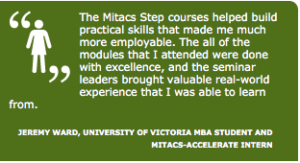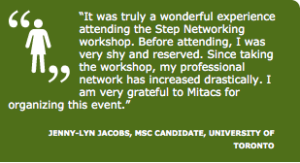Conference calls are often an inevitable part of any major company’s management system, and they are, more often than not, a dreaded exercise for those involved. We live in an age where we expect instant gratification and in which we’ve developed short attention spans; we anticipate our questions being answered immediately, we expect those to whom we’re talking to listen effectively and react accordingly, and we hope (and often expect) that our problems will be solved promptly. This is due, in large part, to the age of technology. Technology, such as email, text messages and Internet on-the-go, has led to this sense of entitlement, this desire for instantaneity. During a conference call, the likelihood of instant gratification is slim, and your full attention is required to get the most out of the call. It is imperative that you take this into account and adjust your behaviour accordingly in order to protect your EP (executive presence).
 The reason why instant gratification is unlikely during a conference call is simply due to the amount of people on the phone at the same time; there are many opinions on the line, many voices to be heard, and many questions to be asked and answered. Our egos can often get in the way and we may abandon what we know to be good, professional behaviour in order to get our thoughts heard. We may also think that our EP is protected because our colleagues can’t see our face, but that is not the case.
The reason why instant gratification is unlikely during a conference call is simply due to the amount of people on the phone at the same time; there are many opinions on the line, many voices to be heard, and many questions to be asked and answered. Our egos can often get in the way and we may abandon what we know to be good, professional behaviour in order to get our thoughts heard. We may also think that our EP is protected because our colleagues can’t see our face, but that is not the case.
Of course, every conference call has a different purpose, however there are some simple tips and tricks that can help you make it through your conference call, all while protecting, and perhaps even enhancing, your EP.
Conference call tips and tricks:
- Keep excellent track of conference call dates and times, as missing a call due to disorganization definitely doesn’t enhance your EP. It is also often a good idea to call in a few minutes early to ensure you will be on time.
- Eliminate background noise! There is enough going on over the phone already without the need for those on the call to hear your Starbucks barista grinding coffee beans for ten minutes.
- Remember, you can’t read body language over the phone. That’s why it’s so important that you ask for clarification if you’re not sure what a colleague meant. We can often tell, by a person’s body language, if what they are saying is positive, negative, or neutral (or something else for that matter), but this gift is not available to us over the phone.
- It is important to always state your name before speaking. Because all attendees are not in the same room together, it is important for the effectiveness of the call that all members know who is speaking.
- Wait your turn to speak. Interrupting someone mid-sentence can be perceived as a huge EP blunder.
- If, however, you feel it necessary to interject because you have something integral to add, it is important, to protect your EP as well as your colleagues confidence and ego, to bring the conversation back to what they were saying before you broke into the conversation.
It can often be harder to protect and enhance your EP over the phone, mostly due to the lack of visual cues that are so integral to thorough and complete communication. That is why it is imperative that you take the necessary steps to adopting proper conference call etiquette – these manners and communication skills will serve you well over the course of your career, and can often translate into the physical workspace.

 Have you ever been to a shop or a restaurant and spoken with a friendly, helpful manager – only to watch that manager turn around and speak rudely to his or her employees? At that moment, did the store or restaurant suddenly lose its credibility? Think about this situation and apply it to your own company: does your organization respect its employees as much as its external clients and partners?
Have you ever been to a shop or a restaurant and spoken with a friendly, helpful manager – only to watch that manager turn around and speak rudely to his or her employees? At that moment, did the store or restaurant suddenly lose its credibility? Think about this situation and apply it to your own company: does your organization respect its employees as much as its external clients and partners?







